Case 8
- George Orwell
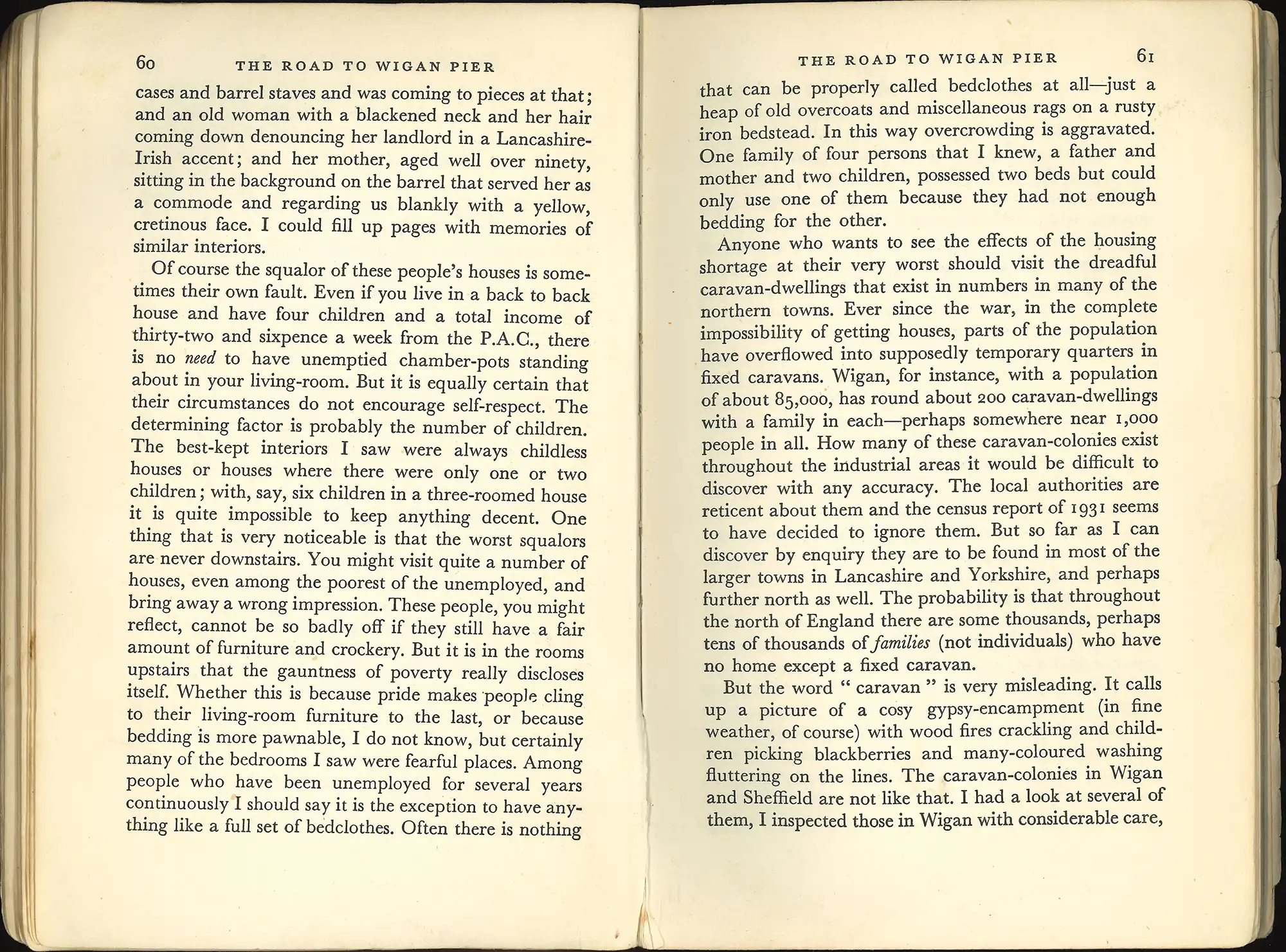
George Orwell, The road to Wigan Pier. (1937). LBC 305.5620942 ORW
In his short life, George Orwell (real name Eric Blair; 1903-1950) wrote Down and Out in Paris and London, Burmese Days, Homage to Catalonia, Animal Farm, and 1984. Gollancz initiated the book that would become The Road to Wigan Pier. He wanted Orwell to go north to report on poverty and unemployment in Britain’s industrial towns such as Barnsley, Wigan, and Sheffield, much like his reportage work in his tramp-like portion in Down and Out. Gollancz hoped the result would be a forceful piece of socialist propaganda. The book ended up in two halves: the first was descriptive; the second autobiographical and argumentative. Orwell himself thought the book was too fragmentary, not very left wing, and he doubted whether it would get published. It was published in March 1937 and did well, selling over 42,000 copies.
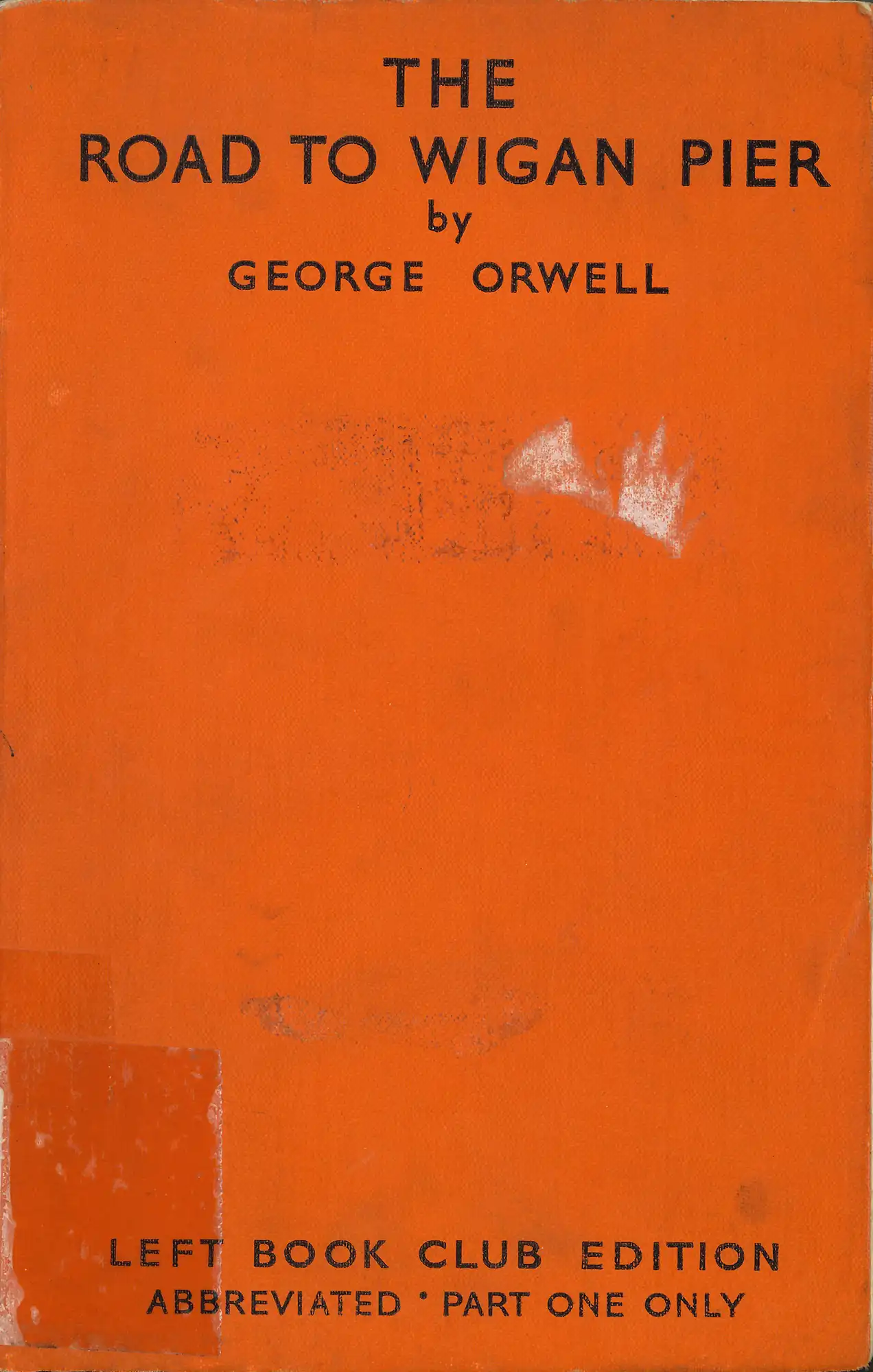
George Orwell , The road to Wigan Pier. Part I. (1937). LBC 305.5620942 ORW
Gollancz, Strachey and Laski liked the first part of Wigan Pier. The second not so. It was an Orwellian rant on the do-gooder and sandal-wearing intellectual left wingers, the ever-present class division, the Soviet Union, the Communist Party, and the workers, who Orwell maintained stank. Gollancz wrote a special foreword to the book disagreeing with Orwell’s views and setting the LBC readers straight on Orwell’s very personal stance. Orwell hated it. Gollancz later issued a special edition of Wigan Pier for propaganda purposes, omitting part 2 entirely. On display is a scarce copy of that edition.
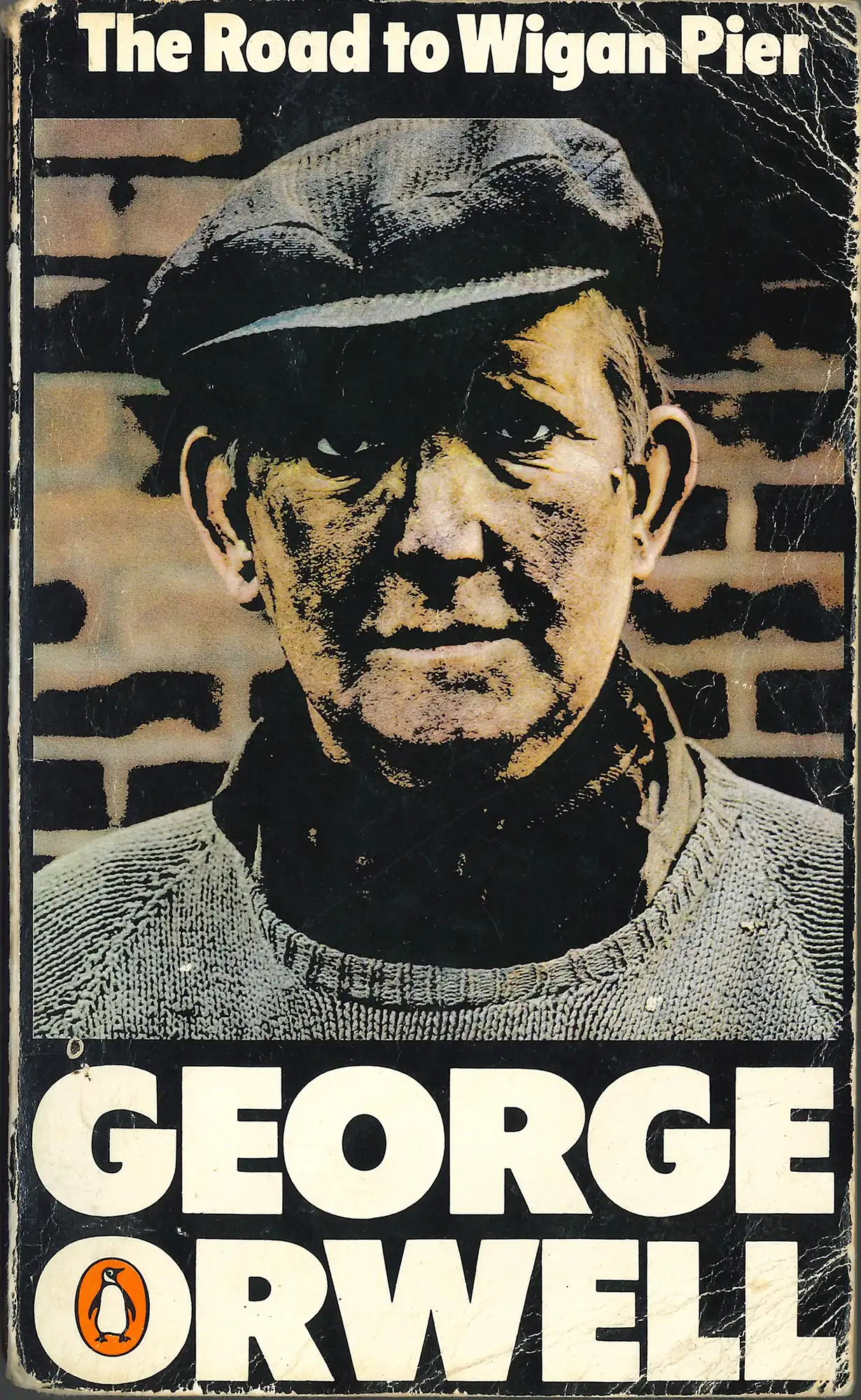
George Orwell , The road to Wigan Pier. London: Penguin, 1974. Private Collection
Orwell’s The Road to Wigan Pier was one of the best Book of the Month choices offered to the LBC members. It is a classic, and it remains in print today. Gollancz unfortunately turned down Orwell’s Homage to Catalonia, because of its uncomfortable revelations that Spanish communists, under Russian trained commissars, were fighting their anarchist allies as well as Franco’s troops, and Animal Farm, because of the satire on one of Britain’s wartime allies, the Soviet Union. Even though Wigan Pier was such a success, Gollancz was dismissive of Orwell, calling him ‘a frightful snob’ and ‘enormously overrated’.
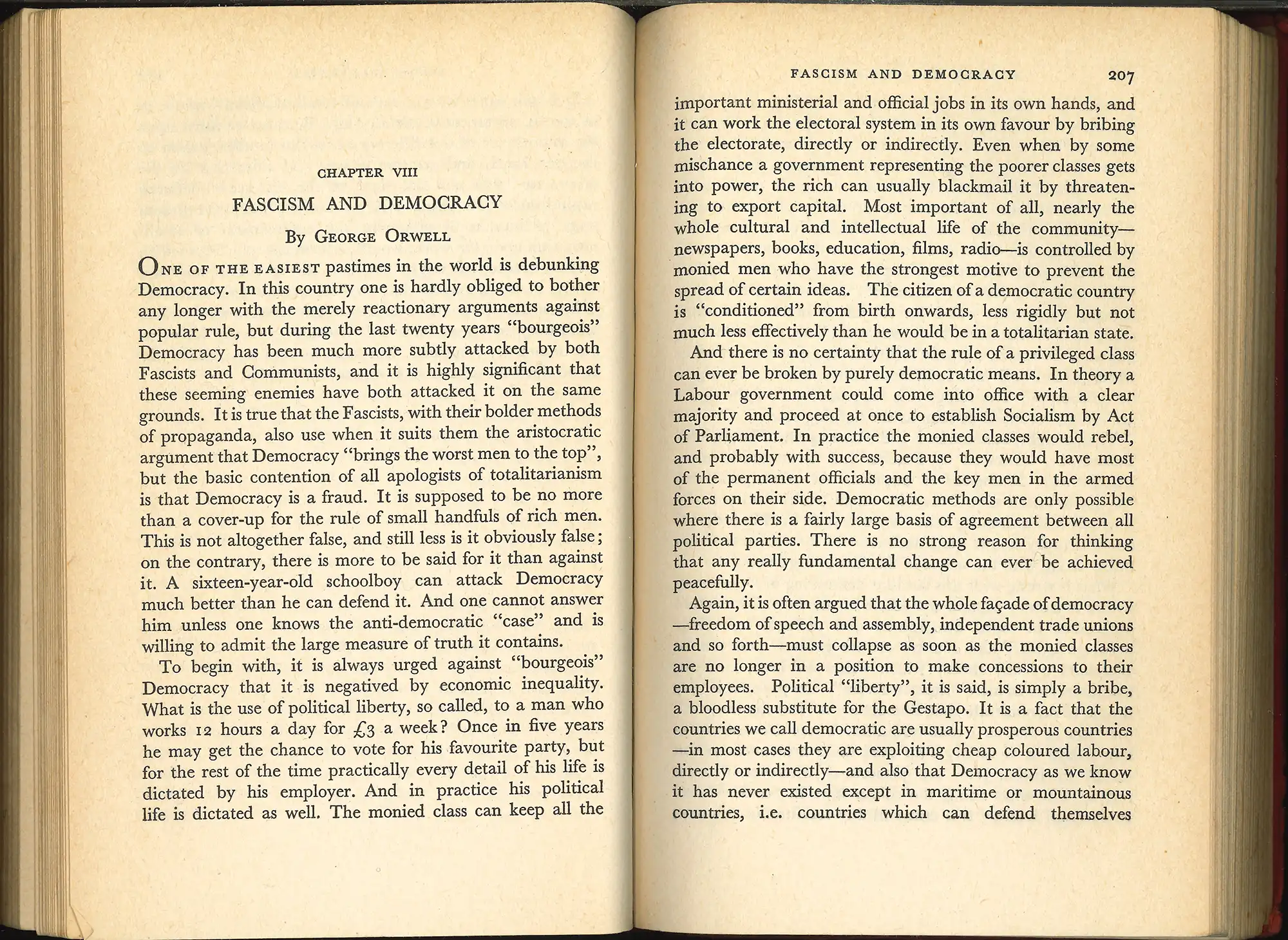
George Orwell , ‘Fascism and Democracy’, in The betrayal of the left. Edited by Victor Gollancz. (1941). LBC 335.43 BET
In February 1941, LBC published the Betrayal of the Left, with its long subtitle: An examination & refutation of Communist policy from October 1939 to January 1941: with suggestions for an alternative and an epilogue on political morality. It contained two essays by Orwell: Fascism for Democracy (on display) and Patriots and Revolutionaries. In the last, Orwell made the claim that a new social Britain could only be realised by the left embracing patriotism. Betrayal is an important publication. It marked the end of communist influence in the LBC.

George Orwell , ‘Fascism and Democracy’, in The betrayal of the left. Edited by Victor Gollancz. (1941). LBC 335.43 BET
Open image in new window
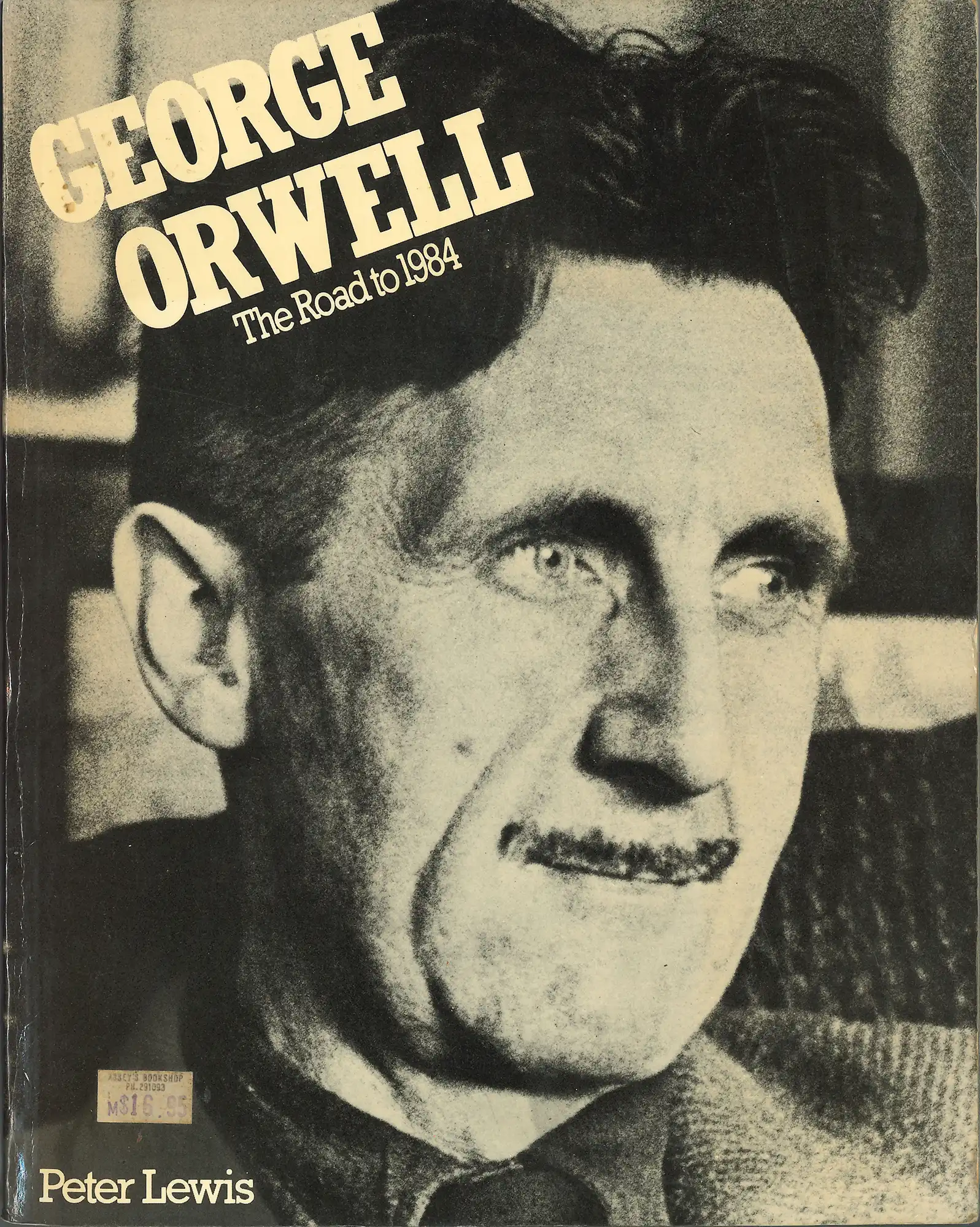
Peter Lewis, George Orwell. The road to 1984. London: Heinemann, 1981. Private Collection
Orwell banned all biographies about himself in his will. Since his death, there have been five full-length biographies; Peter Lewis’s brief overview appeared in 1981.
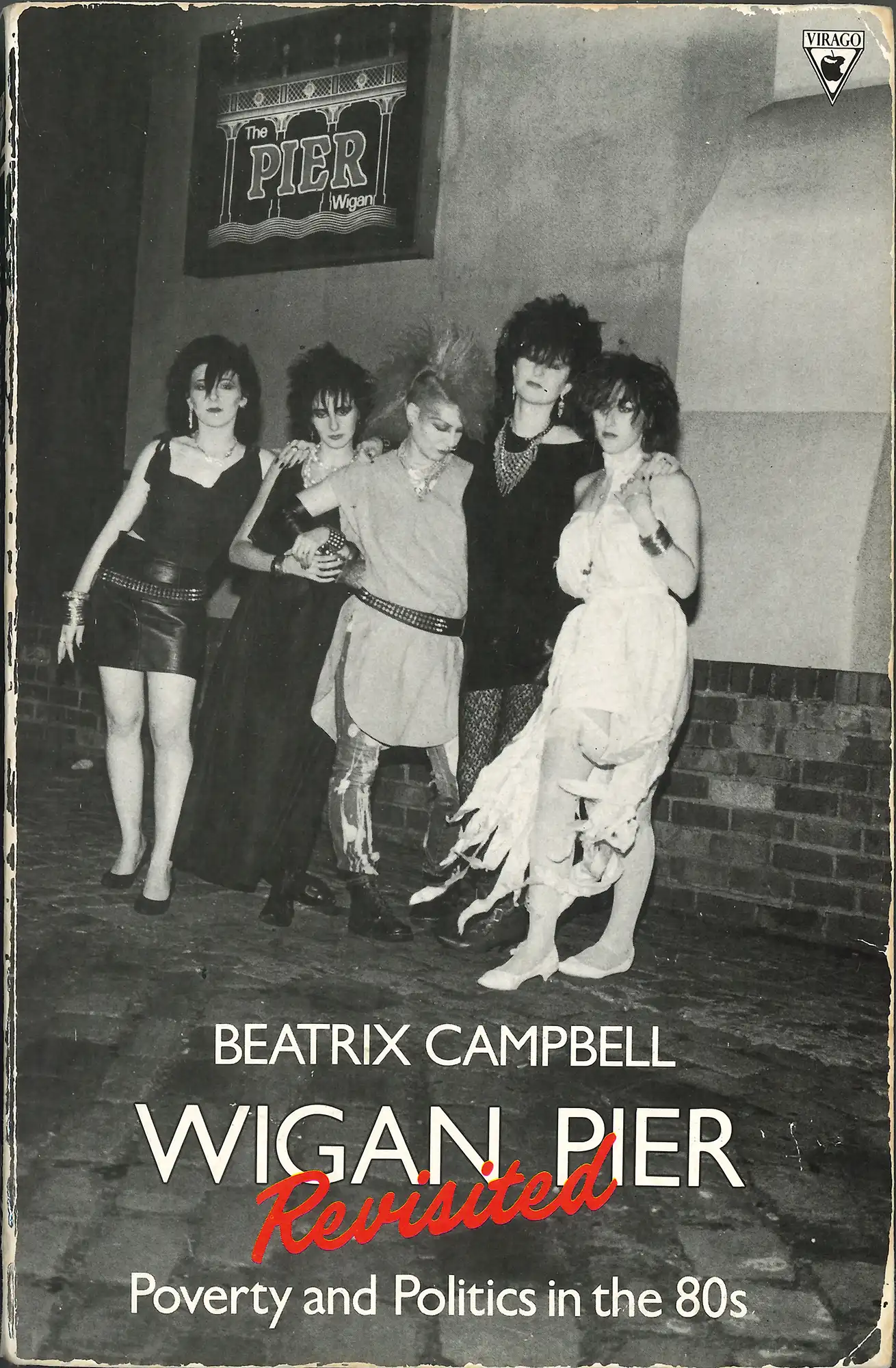
Beatrix Campbell, Wigan Pier Revisited : Poverty and politics in the 80s. London: Virago, 1984. Private Collection
Part of the Orwell industry are those books that have been generated by his account of life in the north in the 1930s. Writers Campbell (1982) and Armstrong (2011) embarked on their own sociological experiments, revisiting ‘Wigan Pier’ at different times and making comment on life in the north after St. George. In both cases, there were some changes for the better. However, there was still need for improvement, especially in regards unemployment, poverty, and treatment of wives and children. Both books deserve a read.

Beatrix Campbell, Wigan Pier Revisited : Poverty and politics in the 80s. London: Virago, 1984. Private Collection
Open image in new window
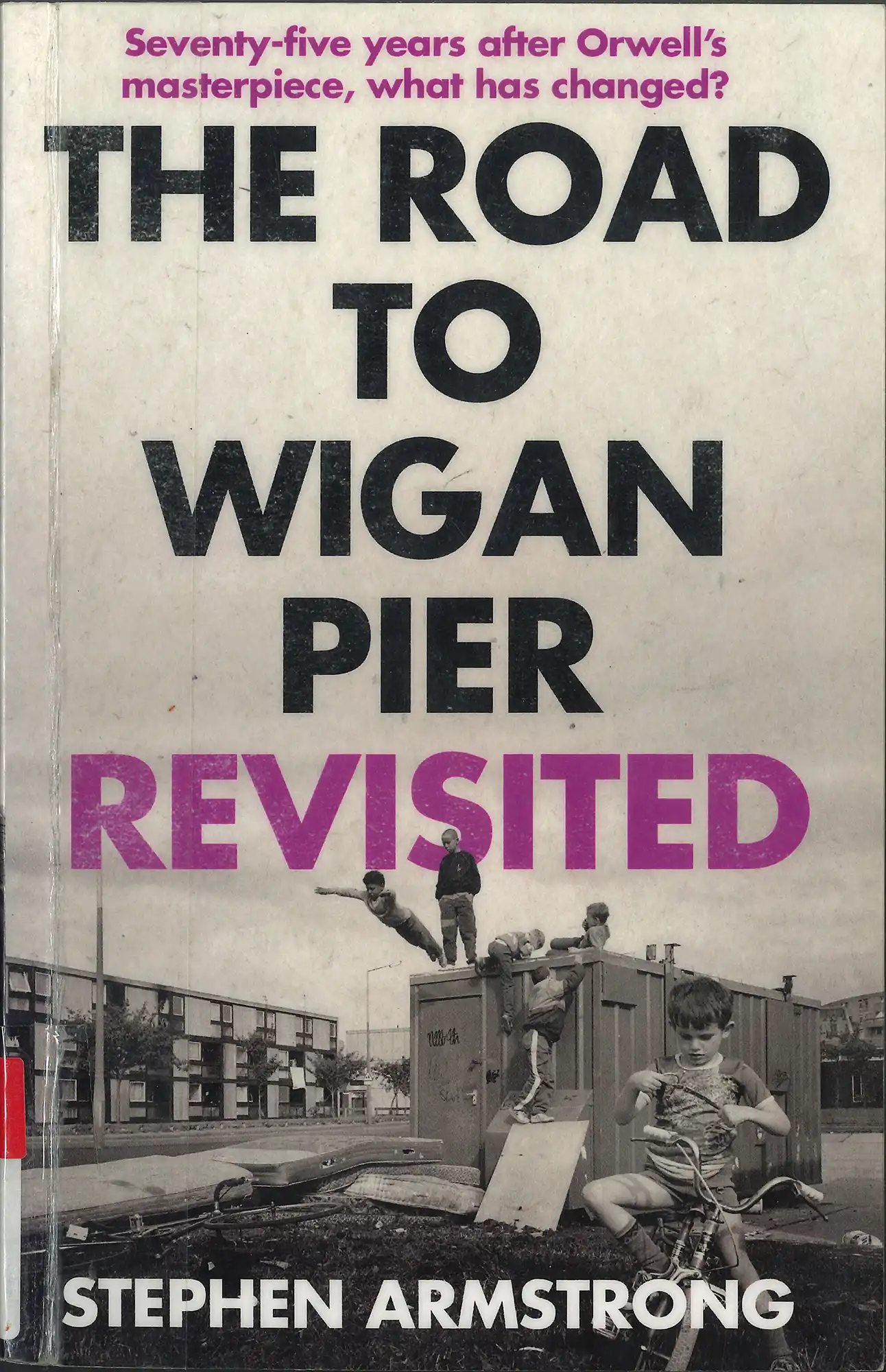
Stephen Armstrong, The road to Wigan Pier revisited. London: Constable, 2012. 305.562 ARM






